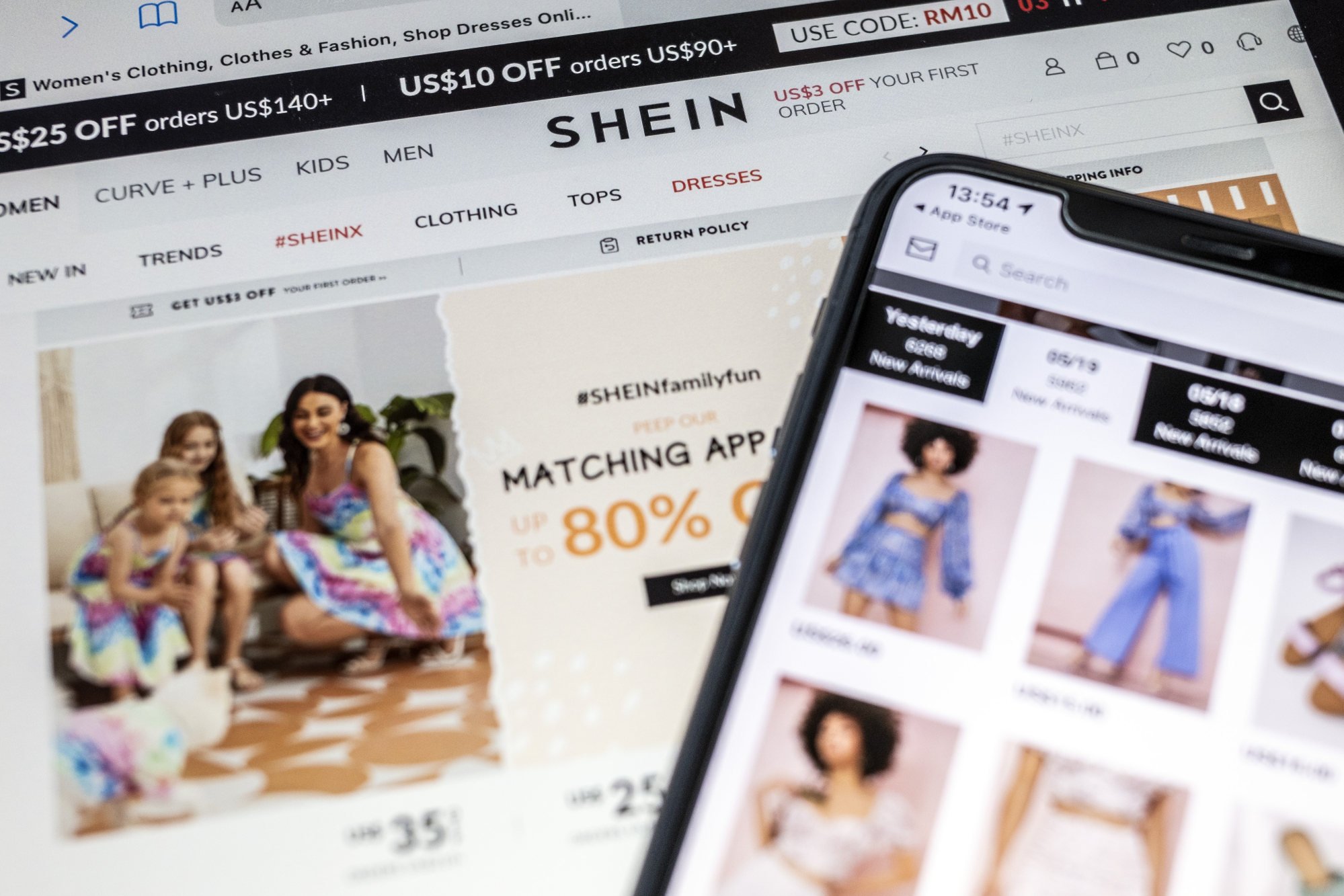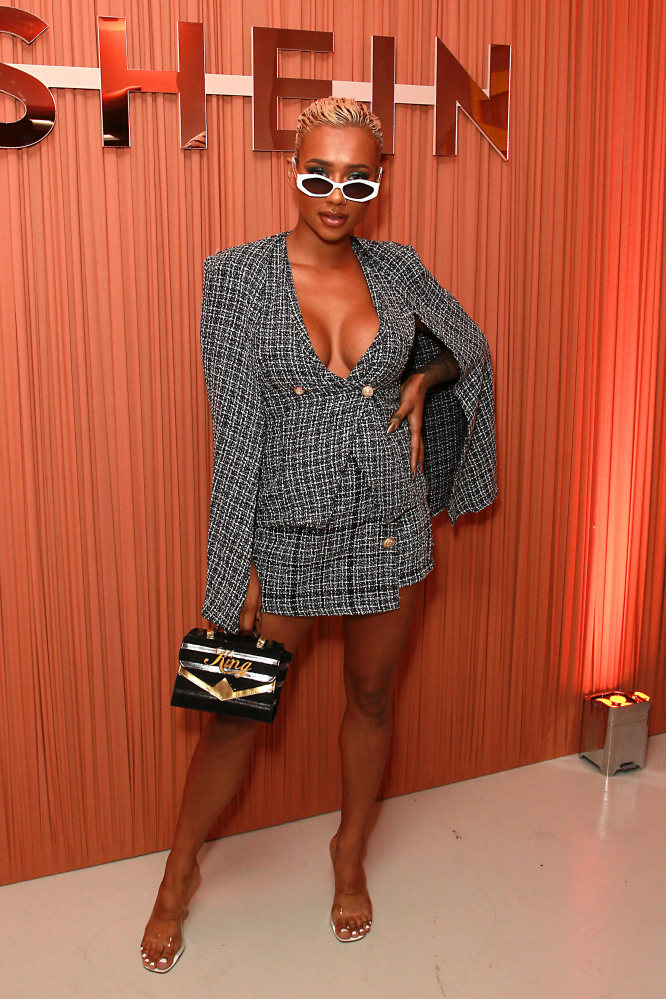
How Trump’s trade war helped China shopping app Shein dominate the Gen Z online fashion market
- A trade-war era change to China’s tax code dramatically reduced costs for the company and all its suppliers, allowing them to undercut their global competition
- With shoppers stuck at home because of the coronavirus, Shein’s sales rose to a staggering US$10 billion last year – all of it without selling at home
On May 17, Shein – pronounced “she-in” – ended Amazon’s 152-day streak as the most downloaded shopping app in the United States, a remarkable feat for any seven-year-old clothing brand, let alone one most Americans over 30 still haven’t heard of.
The kids, though, are all over it. As with so many online phenomena, Gen Z and young millennial shoppers have propelled Shein’s rise, in thrall to the company’s never-ending, always-changing catalogue of clothes at prices that stretch even the most meagre allowance.
One recent Thursday, the app debuted 6,239 new items, including a floral backless halter top (US$5), purple dinosaur-print PJs (US$10), and a prom-perfect fitted butterfly-sleeve dress with pearl trim (US$22). Earlier this year, a UK blogger crowed that she’d paid just £100 (US$141) for more than 30 Shein bikinis, a clearly impractical number of swimsuits until you remember that social media audiences demand novelty above all.
Anything you want at prices so low you can afford two (or 30). That’s a rush approximating freedom for most people, especially fiscally constrained teens. Their enthusiasm has made Shein the first big fashion success from China, though its origins are nowhere to be found on the app. After doubling in 2019, its annual sales took off during the pandemic, more than tripling last year to make Shein the biggest web-only fashion brand in the world, according to the most recent data from Euromonitor.

Global investors like IDG and Sequoia have already piled in. A person familiar with its funding says Shein is valued at as much as US$30 billion, and last year, it hired Goldman Sachs, Bank of America and JPMorgan Chase & Co. as advisers on a potential initial public offering, according to others acquainted with its plans. The company itself is vague, saying reports about it are “often incorrect” and putting its valuation at “several billions of dollars’’ last year. In the short term, there are no IPO plans, a spokeswoman told Bloomberg on May 28.
What is clear is that Shein has ambition. In January, it was one of the bidders for iconic British clothing retailer Topshop, and while it lost to Asos’ £295 million offer, the move was a “red flashing light for existing brands,” said Jonathan Reynolds, academic director of the Oxford Institute of Retail Management at the Saïd Business School.
Why US teens are going wild over Chinese fast-fashion site Shein
As it is, Shein is upending a US$36 billion industry by beating the likes of Zara and H&M at their own game, supercharging the fast-fashion phenomenon that they invented (and have been roundly criticised for). To do that, it’s using a seemingly ingenious combination of supply-chain savvy, data-driven clothing design, and, most intriguingly, tax loopholes in the US and in China that came to the fore during the trade war. The very offensive aimed at reining in Chinese dominance has instead helped create a giant.
China doesn’t have anywhere near the same global fashion cachet as Italy, France or Japan, which is one reason Shein divulges almost nothing to customers about its origins. Anyone interested in learning more – where, say, Shein sources its materials, how one might get a job there, or even where “there” is – hits one dead-end after another on its slick app. One clue to its geography is buried at the bottom of the “logistics and transportation” subsection of the “About Us” page on its website, in a picture of a warehouse loading dock. The logo on the truck parked there is written in English and Chinese.
But Shein owes its success to China. In particular, a trade-war era change to China’s tax code that dramatically reduces costs for the company and its suppliers, allowing them to undercut their global competition, one pair of US$4 bike shorts at a time.

In 2018, as trade relations between the world’s two biggest economies were deteriorating, China responded to a new round of US tariffs by effectively waiving export taxes for direct-to-consumer companies. Because Shein ships most orders from its warehouses in China, it was already in a good position in the US, where packages worth less than US$800 have been able to enter the country duty-free since 2016. When the Trump administration later imposed tariffs to make Chinese products more expensive, the small-value shipments remained exempt.
For Shein, China’s tax support on top of the US loophole was like adding Mentos to Diet Coke. From 2018 to 2019, the company’s sales nearly doubled, according to a Shein investor presentation reviewed by Bloomberg. The next year, sales jumped again. With the added lift from shoppers stuck at home because of the virus, Shein’s sales rose 250 per cent year-over-year to a staggering US$10 billion, according to people familiar with its operations.
It’s also not the only Chinese retailer to benefit from the trade war, and won’t be the last. Thanks to the government’s support, China’s online retail exports – known as “cross-border e-commerce” – jumped 67 per cent in 2018, according to Chinese customs data. The sector has swollen beyond $265 billion and is growing faster than before former President Donald Trump’s assault began.
According to one of the company’s rare press releases, Shein was founded by Xu Yangtian in 2008. Also known as Chris, or as Sky, Xu didn’t start his career in fashion or retail but in search-engine optimisation at a digital marketing consultancy that worked with exporters. He initially called his site Sheinside, then shortened and rebranded it as Shein in 2014. Xu declined repeated requests from Bloomberg for an interview.

Unlike those brands, Shein didn’t start out popular in China. In fact, its clothes aren’t available there at all. Shein’s customers have always been elsewhere, attracted by a network of influencers and celebrity tie-ups. Katy Perry and Lil Nas X headlined a virtual concert for the brand during the early days of the pandemic. Instagramers now throw up a plethora of hashtags; some 850,000 posts are tagged #sheingals. On its app, product shots are styled as social media selfies with indeterminate backdrops. As a company, it appears as native to the internet as its customers.
That’s deliberate, said Charles Shen, founder of Shanghai-based Meetsocial, which works on Shein’s social media marketing. “It takes national confidence to show where you’re from,” Shen said. “The competitiveness of a Chinese brand image, or the capability of building a brand, is still not there.”
You’re talking about Shein being able to undercut somebody by roughly 24 per cent. That’s a huge competitive advantage
But the company makes the most of its proximity to the world’s most vast and well-developed supply chain. Shein requires the manufacturers contracted to make its clothes to be located no more than a five-hour drive from its sourcing hub in the southern Chinese city of Guangzhou, according to company documents seen by Bloomberg. Suppliers must also be able to complete the design and production process in around 10 days.
Shein has also developed proprietary technology that harvests customers’ search data from the app and shares it with suppliers, to help guide decisions about design, capacity and production. It generates recommendations for raw materials and where to buy them, and gives suppliers access to a deep database of designs for inspiration. For their part, apparel makers are eager to work with the company, which has a reputation for paying its invoices more frequently and promptly than is industry standard.
All this – plus not having store inventory to worry about – means Shein can respond almost immediately to shopper preferences, a process one business newsletter dubbed “real-time fashion.”
“If something works, you know about it really quick,” said Michael Horowitz, formerly a senior executive at Global Brands Group Holding, an affiliate of Hong Kong trading and supply chain specialist Fung Group. “If something fails, you only have a couple of hundred units, so how much are you really going to get hurt?”
Chinese brand Shein gains on high street brands Zara and H&M
“Shein has gamed the system, and they’ve done it really well,” said Rick Helfenbein, the former head of the American Apparel & Footwear Association in Washington. Under the current rules, a typical cotton T-shirt is exempt from the standard 16.5 per cent import duty and a 7.5 per cent tariff specific to China.
“You’re talking about Shein being able to undercut somebody by roughly 24 per cent,” said Helfenbein, now a special adviser to Washington-based consulting firm Sorini, Samet & Associates. “That’s a huge competitive advantage.”
Shein’s relatively recent success puts it in uncharted territory. It’s not clear if it can continue to grow as the easing pandemic frees people to shop in physical stores again, and whether it will retain its appeal as its core consumers age out of US$5 crop-tops.

Shein’s focus on algorithm-driven quantity has led to some high-profile slip-ups. The company, which has made statements of corporate solidarity with Black Lives Matter, recently apologised for selling a phone case that depicted a Black person in handcuffs being outlined in chalk. Last year, the company retracted a necklace with the Buddhist swastika and apologised for marketing Muslim prayer mats as home decor.
Yasmin Pryce, an 18-year-old student in London, said she’d tried to figure out where the cotton used in Shein’s clothes came from, to no avail. “There is literally nothing on their website,” she said. “We once tried to look to see who owned them and were looking for about 10 minutes, which is a long time to be searching for something on the internet.”

A year ago, 20 Indian soldiers died in clashes with Chinese troops in a disputed border region on the Tibetan plateau. As part of India’s response, it blacklisted 59 Chinese apps – including Shein. The ban caught the company’s biggest Asian market by surprise.
“My friends and I were really bummed out,” said Sunanda Guruprasad, a high school student in Bangalore. Guruprasad was in a “hoodie phase,” she said, looking to add a few more to her collection, when she learned Shein was shut down.
“I was surprised,” she said. “They didn’t sound Chinese. They didn’t look Chinese … I was beginning to have fun shopping on Shein. I wasn’t much of a shopper until then.”
Now she shops offline or browses H&M or Forever21. Even after Shein was blocked, she checked the site a few times and tried rebooting the app, just in case there were still bargains to be had.

